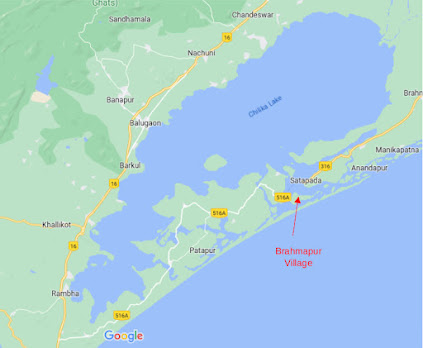The epic of Mahabharata depicts a story of rivalry between the cousins in an ancient royal family, which culminates into the great war of Kurukshetra. There are quite a few variants of the epic. A common narrative is that the Kaurava brothers used
deceptions and unfair means to deprive their cousins, the Pandava brothers, of
the kingdom, which were rightfully theirs. When the Pandavas reclaim the kingdom at a later date, the Kauravas do not budge, and the cousins go to war. The Pandavas emerge victorious and the Kauravas perish. At the end, righteousness triumphs over the wrongdoings.
Common perception holds the five Pandava brothers, Yudhishthir being the eldest, as epitomes of virtue and the Kaurava brothers (there were a hundred of them), led by Duryodhan the eldest, as the villains of the story. But the irony is that there are no temples for any of the Pandava brothers (though some temples in present day Pabbar valley of Himachal Pradesh are attributed to the five brothers), while some 20 odd temples for Duryodhan and his military associate Karna dots the villages in the Tamasa (Tons) valley of Garhwal region of Uttarakhand in India today.
Karna needs some more introduction. He was the eldest of the Pandava brothers, born to and abandoned by his virgin mother in his infancy, rescued and raised by a charioteer and his talents discovered by Duryodhana. Eventually, he became a close friend of Duryodhana and was one of the greatest generals in the Kaurava army during the Kurukshetra war.
 |
| Tamasa (Tons) Valley |
It is said that some soldiers from the defeated army of the Kauravas, loyal to Duryodhana and Karna, took refuge in this remote hilly region after the Kurukshetra war, and started worshiping their heroes. These warriors were known for their bravery and valor, despite whatsoever shortcomings they may have had. Even today, their descendants preach no other god but those two [1]. It is also said that the river Tamasa (river of sorrow) carries the tears of the villagers, who wept at the death of Duryodhan.
 |
| Osla village nestled on the slopes of the Himalayas |
We stopped over for a night at the village of Seema on our trek to Har-ki-Dun (the valley of Shiva). We heard about the temple of Duryodhan in the nearby Osla village from the local people and decided to visit it. It was a wooden temple with exquisite curving, but almost in ruins. As contact with outside world grows, quite a few of the villagers, including the contemporary priests, do not openly admit to worshiping the villains of Mahabharata -- they refer to the temple as the temple of Someswara (Shiva) instead. Unfortunately, the door was locked and we could not visit inside. Other temples for Duryodhan and Karna can be found in the valley of the river Tamasa (Tongs), such as in the villages of Saur, Jakholi and Netawar, in Uttarakhand.
 |
| The temple of Duryodhan at Osla |
By some other theory [2], the Pandavas and the Kauravas were not cousins, but belonged to different clans, which had long-standing rivalries. The Pandavas belonged to a Mongolian race, called the Kiratas, who dwelt in the Pabbar valley (in present day Himachal). The Kauravas hailed from the Khasa cult and dominated the Tamasa valley of Uttarakhand. Temples attributed to characters of Mahabharata in this Himachal Pradesh - Uttarakhand region support the theory. The temples of Duryodhan and Karna in the valley were built in wood in a style adopted by the Khasa cult at that time (7th - 8th century AD). Some of the temples, for example the one at Saur (which is the biggest of these), has been renovated in the recent times.
References:
- Uttarakhand: Temples devoted to Duryodhana and Karna of Epic Mahabharata
- India Mapped. Temples in India
A related story: The Ethereal Ghost of Har-ki-Dun






